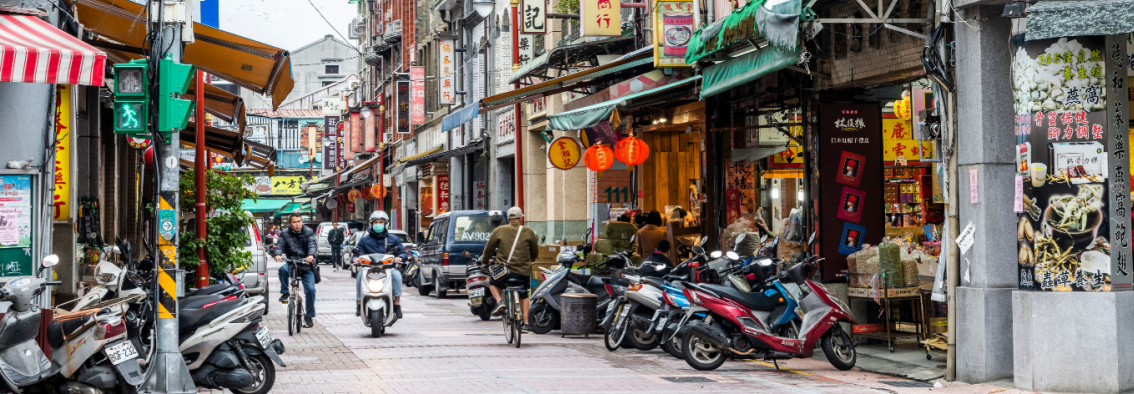Between 1932 to 1945, women and girls throughout the world were forced to provide sexual services to members of the Japanese military as so-called “wartime comfort women” (jugun ianfu in Japanese). This system of institutionalized sexual slavery, carried out through so-called “comfort stations” across Asia, was state-organized and has since become one of the most controversial historical and human rights issues in Asia. Over the decades, women and advocates in different countries have sought justice and recognition, though their experiences have not always been remembered or represented equally. These differences in recognition and historical memory vary across national and social contexts.
In South Korea, the comfort women issue is one of the most prominent historical concerns in relation to Japan. According to a 2023 poll conducted by Genron NPO, 60 percent of South Korean respondents cited comfort women issues as the most important historical issue that needs to be resolved between the two countries. In contrast, despite Taiwan’s high level of democratization, Taiwanese comfort women have garnered considerably less public attention. National surveys conducted by the Japan-Taiwan Exchange Association in 2024 did not even include questions asking about comfort women—and, on the contrary, Japan ranked as Taiwan’s favorite country. This represents a stark difference from the situation in South Korea.
This disparity raises a critical question: why has the comfort women issue gained such differing levels of public attention in these two societies? And how did democratization in South Korea and Taiwan influence the recognition of comfort women’s rights? By comparing the issue of comfort women in South Korea and Taiwan, this article explores how the historical narratives of the comfort women, and broader discourses on women’s rights, have taken shape differently in each society through the democratization process. In the end, although South Korea and Taiwan share similar colonial legacies, their respective political transitions and civil society engagements have shaped divergent national approaches to historical memory and justice.
The Scale of Victims
The first key factor contributing to disparity in the social recognition of Korean and Taiwanese comfort women is the number of victims. From 1932, when the first comfort station was established in China, until the end of World War II, numerous women from Korea and Taiwan were mobilized, coerced, or deceived into serving as comfort women. While the numbers of Korean comfort women are estimated to be around 170,000 to 200,000, the numbers of those affected from Taiwan are estimated to be far lower, at approximately 1,000 to 2,000. As we can see from this, one of the major factors behind South Korea’s greater public recognition of the issue could be that there are significantly more Korean comfort women than Taiwanese comfort women.
Democratization and Recognition
However, the number of the victims is not the sole reason for South Korea’s widespread recognition of the comfort women issue—the timing and nature of democratization in each country has also contributed to the level of recognition given to the issue.
The process of democratization has been a pivotal catalyst for the promotion of women’s rights in both South Korea and Taiwan. In South Korea, the restoration of democracy in 1987—following the nationwide June Democratic Struggle and the earlier struggles symbolized by the 1980 Gwangju Uprising—enabled the emergence of grassroots movements, academic research, and the testimonies of comfort women, which brought the issue into national and international discourses.
By 1990, the Korean Council was established as the first organization in South Korea dedicated to supporting comfort women. In 1991, Kim Hak-sun became the first comfort woman to publicly testify, initiating a wave of activism, legal actions, and international attention. A significant expression of this activism began with the “Wednesday Demonstration,” which has taken place weekly in front of the Japanese Embassy in Seoul since 1992. The demonstration demands that the Japanese government redress the issue of comfort women by making a formal apology and providing reparations for those who were affected. However, the Wednesday Demonstration functions not only as a protest, but also as a powerful ritual of collective memory and national identity. Such protests ultimately led to Japan’s official acknowledgment of the issue in 1993.

Image: Comfort women rally in front of the Japanese Embassy in Seoul (August 2011). (Image source: Wikimedia Commons)
In contrast, Taiwan’s democratization began in 1987, after the lifting of nearly four decades of martial law imposed by the Kuomintang (KMT, 國民黨) government. Although democratization eventually allowed for greater freedom of expression, discussions on historical injustices—including the issue of comfort women—gained traction more slowly than in South Korea. [1] While support organizations and interviews with comfort women did emerge in the early 1990s, these efforts lacked the early momentum and visibility seen in South Korea.
The Taipei Women’s Rescue Foundation (TWRF), the only organization in Taiwan dedicated to supporting former comfort women, was established in 1987. TWRF has played a pivotal role in locating comfort women survivors, providing legal aid, and raising public awareness of the issue. When TWRF published research identifying the experiences of Taiwanese women during the war in 1992, the Taiwanese public finally became more broadly aware of the comfort women issue. However, Taiwanese society widely shared the contemptuous view that comfort women were “dirty beings.” At the first press conference organized by the TWRF to demand an apology and compensation from the Japanese government in August 1992, the Taiwanese comfort women testified by hiding their faces behind black curtains.
The fact that South Korea transitioned into being a democracy earlier contributed significantly to the earlier emergence of public testimonies, the establishment of support organizations, and legal actions addressing the comfort women issue. While South Korea began discussion of the issue in the 1980s, general awareness of the comfort women issue has only been known in Taiwan since the 1990s, meaning that Taiwan civil society is roughly 10 years behind South Korea when it comes to mobilization around the issue.
Post-Colonial Political Authority
The third key factor shaping the divergent trajectories of the comfort women issue in these two societies lies in the differences in the nature of their post-colonial central authorities. After World War II, Taiwan came under the rule of the KMT, a regime originating from mainland China. According to Shu-Hua Kang (康淑華), an assistant professor in the Department of Social Work at National Taipei University, the KMT sought to distance itself from the legacy of Japanese colonial rule, and largely ignored and marginalized the experiences of Taiwanese comfort women. [2] Mamie Misawa also states in her essay, “The Representations of ‘Comfort Women’ in Contemporary Taiwan” (Gendai Taiwan “ianfu” gensetsu no seiri in Japanese), that Taiwanese women’s testimonies were silenced or stigmatized, viewed as “shameful remnants” that had been controlled by Japan. Therefore, many Taiwanese comfort women remained anonymous for a long time, and their stories were excluded from the dominant historical narrative, which prioritized Chinese nationalism over colonial memory.
On the other hand, postwar South Korea was governed by a Korean people-led postwar administration that constructed Korean national identity in direct opposition to Japanese imperialism. This domestic governance structure fostered a political and cultural environment that was more receptive to addressing colonial injustices. Comfort women were widely recognized as victims of imperial oppression, and their voices were amplified through grassroots activism, media coverage, and state-led initiatives. The government also supported the construction of museums and memorials, incorporated the issue into public education, and contributed to the creation of symbolic spaces of protest such as the “Statue of Peace,”which was erected in Seoul in 2011. Thus, post-war political authority shaped divergent conditions for the comfort women: While South Korea fostered an environment that enabled the women to speak out, led by a government based on their shared national identity, Taiwan continued to marginalize these women in the post-colonial era under a regime that came from the outside after the end of Japanese rule.
Taiwanese Comfort Women: Challenges of Divided Nationalism and Gendered Memory
As a result of these political differences, Taiwanese comfort women faced a further deeper identity-based disjuncture than did South Korean comfort women. The regime that governed them after the war neither reflected their lived experience under Japanese rule, nor recognized them as part of its foundational nationalist narrative. According to Misawa, in postwar Taiwan the issue of comfort women was shaped by two competing strands of nationalist ideology. The first ideology was the Republic of China (ROC) nationalism promoted by the KMT, which emphasized its anti-Japanese credentials; and the second was Taiwanese nationalism as articulated by conservative elites, who had experienced Japanese rule with traditional patriarchal norms. This ideological divergence produced conflicting interpretations of the comfort women issue. While the KMT initially marginalized womens’ voices, it gradually shifted its stance in the 1990s toward acknowledging the suffering of comfort women and supporting womens’ rights. Taiwanese nationalism, on the other hand, continued to deny elements of coercion, thereby reinforcing social stigma and silencing survivors. [3]
Moreover, wartime memory in Taiwan has been predominantly male-centered. While men were commemorated for their wartime contributions, womens’ experiences, particularly those of comfort women, were stigmatized. Comfort women were not viewed as victims of structural violence but were often dismissed as “pitiful” or “shameful.” According to Kang, even women who had served in other wartime roles, such as nurses, avoided association with comfort women due to fear of social stigma. It was not until the 1990s that some survivors began to speak out publicly, emphasizing that they had not passively accepted their fate under Japanese rule but had fought for autonomy. These testimonies, supported by organizations such as the TWRF, gradually shifted public discourse and increased recognition of their experiences, particularly within Taiwan’s growing women rights movement. [4]
Shared Traumas and Political Controversies
Up to this point, this article has focused on the differences between South Korea and Taiwan in relation to the comfort women issue; however, there are several significant similarities between the two. First, comfort women in both countries are victims of Japanese imperialism during wartime. The 1998 United Nations McDougall Report officially recognized the comfort women system as not merely an accumulation of individual crimes, but rather as a system of state-organized, systematic wartime sexual slavery orchestrated by the Japanese government and military.
Second, both groups’ experiences were politically exploited by their respective governments after the war. Misawa states in her 2021 essay, “A Study on the Representation of ‘Comfort Women’ in Contemporary Taiwan” (Gendai Taiwan “ianfu” hyōshō ni kansuru ichi kōsatsu in Japanese), that the comfort women issue has been politicized beyond its humanitarian and historical dimensions, as seen in 2015 Japan-South Korea Agreement—which did not reflect the victims’ voices and was simply a surface-level, politicized agreement—and the KMT’s usage of the comfort women issues for political gain.
Third, both groups of women shared the similar experiences of trauma and suffering. According to psychiatrist Judith L. Herman’s concept of “traumatic bonding,” he states that “the enforced dependency of the victim, the isolation from potential sources of help, and the intermittent reward and punishment reinforce traumatic bonding, making the victim feel emotionally tied to the perpetrator.” Likewise, many comfort women also developed complex psychological attachments to their perpetrators under strict surveillance, illustrating the deep trauma endured. As a result, many comfort women around the world share a common legacy of imperialist violence, political alienation, and unresolved trauma.
Conclusion
While the social and political contexts differ across different Asian countries, comfort women have continued to raise their voices, seeking recognition and justice. The shared trauma they endured has fostered a sense of transnational solidarity, reflected in joint legal actions and public testimonies in South Korea and Taiwan. However, as this article has shown, social awareness and public opinion regarding the comfort women varies widely, depending on the country and region. In particular, research done on Taiwanese comfort women remains limited when compared to South Korea, due to language barriers and a lack of archival sources. For example, searching for the keywords “Korean comfort women” on the JSTOR database yields over 20,000 results, whereas the phrase “Taiwanese comfort women” generates around 2,000 results. This roughly tenfold difference highlights the disproportionate focus on Korea in the existing academic discourse on comfort women.
This poses challenges for researchers who aim to conduct comparative analyses and gain a comprehensive understanding of the issue. Moreover, with the passing of the last known former Taiwanese comfort woman in 2023, it is no longer possible to hear directly from survivors. This development underscores the urgency of preserving memory and reexamining historical responsibility.
The main point: Due to differences in South Korea and Taiwan relating to the scale of victims, the time of democratization, and the agendas held by the post-colonial central authorities, the issue of comfort women is viewed differently in South Korea and Taiwan. Still, both groups of comfort women share common experiences when it comes to their trauma, suffering, and marginalization. With former comfort women getting older by the year, it is vital to urgently preserve memory and reexamine historical responsibility.
[1] WAM Museum, 日本人にされたアマたち (2014).
[2] Interview with Assistant Professor in the Department of Social Work at National Taipei University, Shu-Hua Kang, March 25, 2025.
[3] Interview with Shu-Hua Kang, March 25, 2025.
[4] Interview with Shu-Hua Kang, March 25, 2025.




